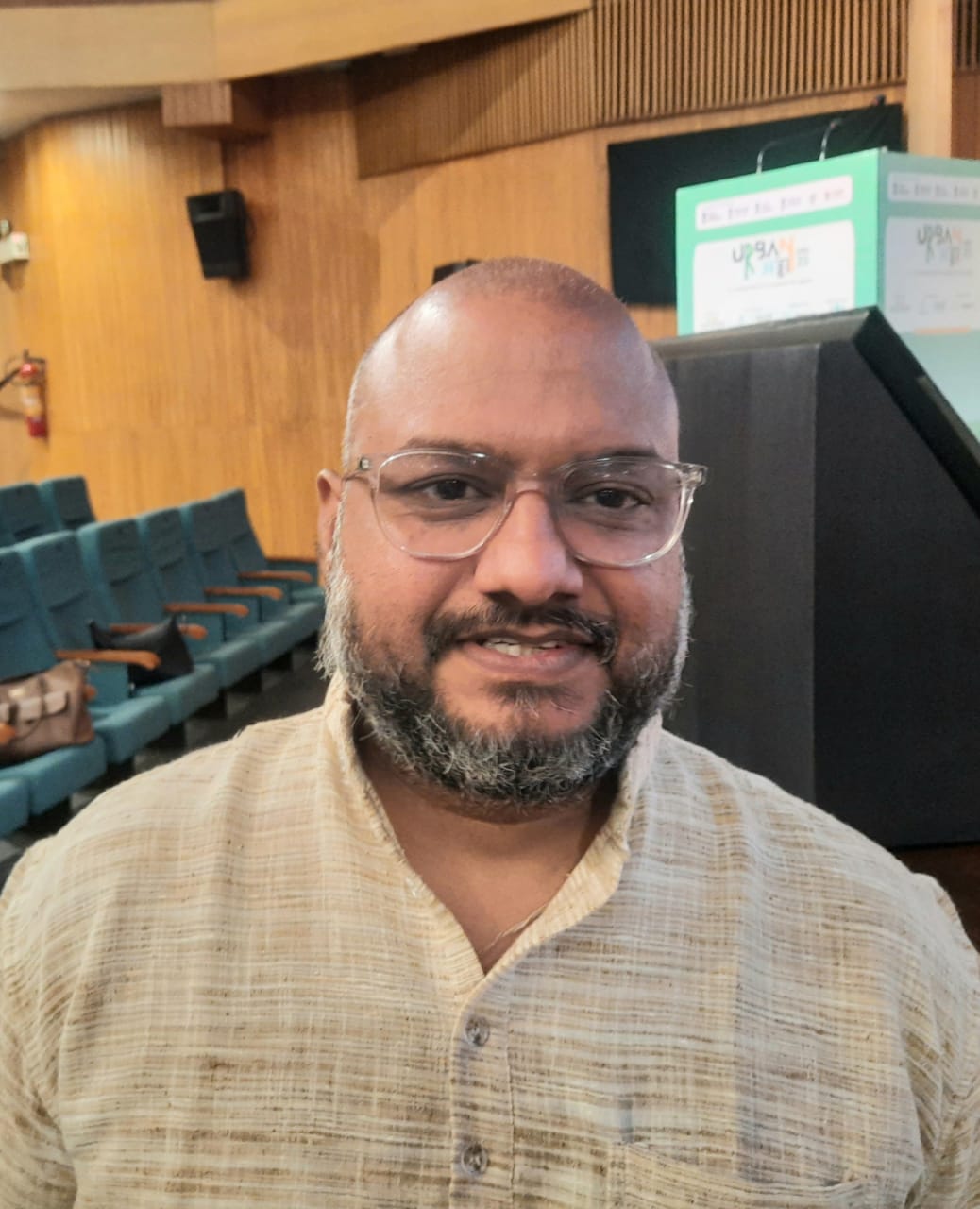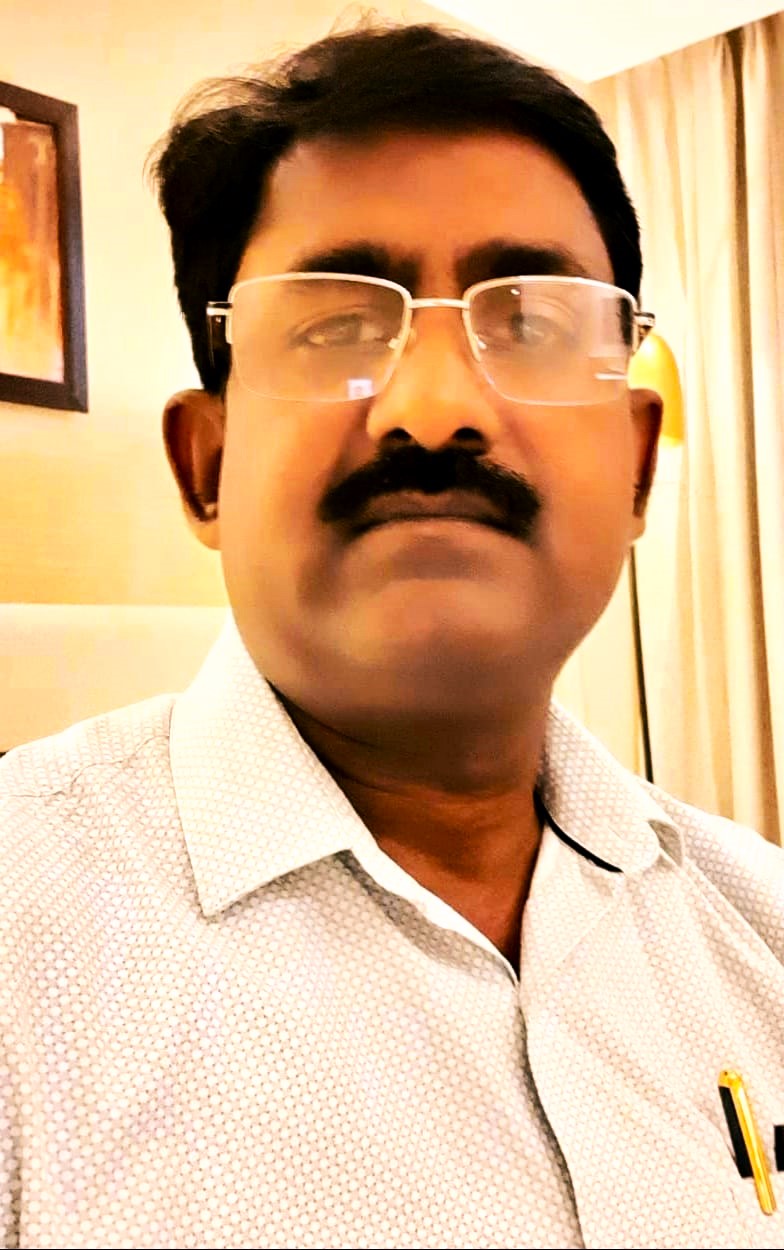Dr. Anshuman Kumar stands as a preeminent Onco-Surgeon in India, celebrated for his outstanding contributions to the realm of cancer surgery. His distinguished career boasts an impressive tally of over 34,000 cancer surgeries, reflecting his unwavering commitment to advancing medical science. Dr. Kumar’s educational journey commenced at Patna Medical College, where he obtained his initial qualifications, subsequently securing a Post-Graduation in General Surgery from JNMC, Aligarh. His pursuit of excellence led him to specialize in Onco-Surgery, culminating in an M.Ch from the prestigious Gujarat Cancer & Research Institute (GCRI) in Ahmedabad. Further enriching his skill set, he obtained the MRCS from the UK (Edinburgh), focusing on the intricacies of cancer surgeries.
Driven by a multifaceted approach to healthcare, Dr. Kumar embarked on a comprehensive academic journey. Furthermore, he earned an MBA in Hospital Administration, completed a PG Course in Quality Management and accreditation of Healthcare Organizations (OMA&HO), and acquired an LLB. In a bid to enhance both personal well-being and patient care, he also delved into a CCYP Course in Yoga at BHU Varanasi, fostering empathy with patients seeking alternative treatments and fortifying doctors against burnout.
Dr. Kumar’s illustrious career is adorned with accolades, including the “Oncologist of the Year 2014,” the “Healthcare Changemakers-Legend Award,” and the “Rising Star Award in Oncology” conferred by Times Healthcare Achievers Delhi/NCR in 2018. Notably, he received the “Vidyuat Bhushan Samman” from Akhil Bhartrya Vidyut Parishad, Kashi.
With a global impact extending beyond surgical prowess, Dr. Kumar conducts hands-on programs and delivers enlightening lectures worldwide on cancer management. His involvement in media debates and numerous publications in indexed journals underscore his commitment to advancing cancer care. His international outreach includes visits to countries like South Korea, Nepal, Myanmar, Ethiopia, Uzbekistan, Oman, Kenya, Bangladesh, and Nigeria, delivering cancer care, training to caregivers, and spearheading awareness programs.
In an exclusive discussion with The Interview World, Dr. Anshuman Kumar, Director – Surgical Oncology at Dharamshila Narayana Superspeciality Hospital, sheds light on the intricate relationship between pollution and cancer, sharing preventive measures. The interview unveils key insights into his groundbreaking work and perspectives on pressing issues in the field of oncology.
Q: What is the current scientific understanding of the link between pollution and cancer, and how significant is this relationship in the context of public health?
A: The prevailing scientific agreement indicates that being exposed to specific pollutants heightens the likelihood of developing cancer. Key contributors to this risk include air pollution, water contamination, and exposure to carcinogens in the workplace. Although the connection has been established, pinpointing the exact cause can pose a challenge. Nevertheless, it is essential to prioritize minimizing exposure to pollutants for public health. This proactive approach significantly contributes to disease prevention, particularly in the case of cancer.
Q: In your clinical experience, have you observed any trends or patterns in the types of cancer cases that may be attributed to exposure to environmental pollutants?
A: Numerous scientific studies consistently establish connections between environmental pollutants and diverse forms of cancer. For instance, air pollution is commonly linked to lung cancer, while contaminants in water may play a role in the development of bladder or colorectal cancers.
Within the context of India, there has been a noticeable rise in lung cancer cases among nonsmokers each year. It is crucial to emphasize that individual cases can exhibit variations, and the development of cancer is influenced by a multitude of factors. Keeping abreast of regular research updates serves to enhance and fine-tune our comprehension of these intricate associations.
Q: Are there certain populations or demographics that may be more vulnerable to the carcinogenic effects of pollution, and how does socioeconomic status play a role in this vulnerability?
A: Certainly, specific groups, particularly those in lower-income communities, might face increased susceptibility to the carcinogenic consequences of pollution. This vulnerability is often linked to socioeconomic status, manifested through factors such as restricted access to healthcare, heightened exposure to environmental hazards in disadvantaged neighborhoods, and a diminished capacity to implement protective measures. Moreover, this issue underscores environmental justice concerns, emphasizing the unequal impact of pollution on marginalized communities.
Q: What preventive measures can individuals take to minimize their exposure to environmental pollutants and reduce their risk of developing cancer?
A: Individuals can minimize exposure to environmental pollutants and reduce their cancer risk by:
Air Quality: Avoiding areas with high air pollution, using air purifiers, and keeping indoor spaces well-ventilated.
Diet: Choosing a healthy and balanced diet rich in fruits, vegetables, and whole grains can help reduce exposure to certain contaminants.
Water Quality: Drinking clean and filtered water, and being aware of local water quality reports.
Personal Care Products: Selecting products with fewer chemicals and opting for eco-friendly alternatives.
Physical Activity: Engaging in regular physical activity to support overall health and potentially aid in toxin elimination.
Reduce Pesticide Use: Choosing organic foods, using natural pest control methods, and minimizing pesticide exposure.
Quit Smoking: Avoiding tobacco and quitting smoking, as it is a major contributor to cancer risk.
Sun Protection: Using sunscreen and protective clothing to minimize exposure to harmful UV radiation.
Occupational Safety: Taking precautions at work to reduce exposure to workplace hazards and following safety guidelines.
Awareness: Staying informed about local environmental issues and advocating for policies that promote a healthier environment.
These measures, combined with broader community efforts and policy changes, can contribute to a healthier living environment and reduce the risk of cancer.
Q: From a policy perspective, what initiatives or regulations do you believe would be most effective in reducing pollution-related cancer risks on a broader scale?
A: Effective policies to reduce pollution-related cancer risks on a broader scale could include:
Stringent Emission Standards: Implementing and enforcing strict regulations on industrial emissions, vehicle emissions, and other sources of air pollution to minimize carcinogenic pollutants.
Environmental Impact Assessments: Conducting thorough assessments before approving new developments or industrial projects to evaluate their potential impact on local environments and health.
Waste Management Regulations: Enforcing proper disposal and recycling practices to prevent contamination of soil and water by hazardous materials.
Green Energy Promotion: Incentivizing and promoting the use of clean and renewable energy sources to reduce reliance on fossil fuels and decrease air pollution.
Public Transportation: Investing in and expanding public transportation infrastructure to reduce the number of individual vehicle emissions and improve air quality.
Community Engagement: Involving communities in decision-making processes and ensuring that policies address environmental justice concerns, preventing disproportionate impacts on vulnerable populations.
Chemical Safety Regulations: Strengthening regulations on the production and use of chemicals, ensuring thorough testing and evaluation of their potential health impacts.
Monitoring and Reporting: Establishing comprehensive monitoring systems to regularly assess air, water, and soil quality, with transparent reporting to the public.
Educational Initiatives: Implementing public awareness campaigns to inform people about the risks of pollution and ways to reduce their exposure.
International Cooperation: Collaborating with other countries to address transboundary pollution and create global initiatives for environmental protection.
A holistic approach involving multiple sectors, collaboration between governments, industries, and communities, and a commitment to sustainable practices is essential for effective pollution control policies.
Q: In terms of research, what areas do you think warrant further investigation to better understand the mechanisms by which pollution contributes to cancer, and to develop more targeted prevention strategies?
A: Research in the following areas could enhance our understanding of how pollution contributes to cancer and help develop targeted prevention strategies:
Biomarkers and Mechanisms: Investigating specific biomarkers and molecular mechanisms that link exposure to pollutants with the development of cancer, providing insights into early detection and intervention.
Cumulative Exposure: Studying the cumulative effects of long-term exposure to various pollutants and how different pollutants interact synergistically or additively to increase cancer risk.
Individual Susceptibility: Examining genetic and epigenetic factors that make certain individuals more susceptible to the carcinogenic effects of pollutants, contributing to personalized prevention strategies.
Microbiome Interactions: Understanding the role of the human microbiome in mediating the impact of pollution on cancer risk, potentially leading to interventions that modulate the microbiome for protection.
Urban Planning and Health: Investigating the health impacts of urban planning decisions, such as the location of industrial facilities or highways, on local populations to inform policies that mitigate exposure.
Early Life Exposures: Exploring how exposures during critical periods of development, including prenatal and early childhood, contribute to cancer risk later in life.
Emerging Pollutants: Studying the health effects of newly identified pollutants and emerging contaminants, including those from novel technologies and industrial processes.
Social Determinants: Analyzing the role of social determinants, such as socioeconomic status and access to healthcare, in mediating the relationship between pollution and cancer risk.
Global Perspectives: Conducting international studies to understand how different regions and cultures may be affected by specific pollutants, guiding context-specific prevention strategies.
Intervention Effectiveness: Evaluating the effectiveness of interventions and policies aimed at reducing pollution and assessing their impact on cancer rates, informing evidence-based public health measures.
By addressing these research areas, scientists can deepen their understanding of the complex relationship between pollution and cancer, leading to more effective prevention strategies and interventions.
Q: As an oncologist, how do you communicate with patients about the potential impact of pollution on cancer risk, and what advice do you typically provide to those concerned about environmental factors and their health?
A: When communicating with patients about the potential impact of pollution on cancer risk, it’s important to use clear and empathetic language. Here are some communication strategies and advice:
Empathy and Understanding: Begin by acknowledging their concerns and expressing empathy. Validate their feelings and provide a supportive environment for discussion.
Clear and Accessible Language: Use plain language to explain the potential link between pollution and cancer risk. Avoid jargon and provide information in an easily understandable way.
Individual Risk Factors: Emphasize that while pollution can contribute to cancer risk, it is one of many factors. Highlight the importance of considering individual risk factors, such as lifestyle, genetics, and overall health.
Preventive Measures: Provide practical advice on minimizing exposure to environmental pollutants, such as choosing clean air spaces, a healthy diet, and lifestyle choices that promote well-being.
Local Environmental Information: Share information about local environmental quality, such as air and water reports, and encourage patients to stay informed about potential hazards in their surroundings.
Regular Health Check-ups: Emphasize the importance of regular health check-ups and screenings for early detection, as early intervention can significantly improve outcomes.
Positive Action Steps: Empower patients by suggesting positive actions they can take, such as supporting policies for cleaner environments, participating in community initiatives, and adopting sustainable practices.
Avoiding Panic: While it’s important to discuss the potential risks, avoid creating unnecessary panic. Provide a balanced perspective and focus on practical steps individuals can take to protect their health.
Multidisciplinary Approach: If needed, involve other healthcare professionals, such as environmental health experts or nutritionists, to provide comprehensive guidance.
Encourage Questions: Create an open dialogue by encouraging patients to ask questions and express their concerns. Provide additional resources for those who want to delve deeper into the topic.
By fostering open communication, providing practical advice, and emphasizing individual empowerment, healthcare providers can help patients navigate concerns about environmental factors and their potential impact on health.









